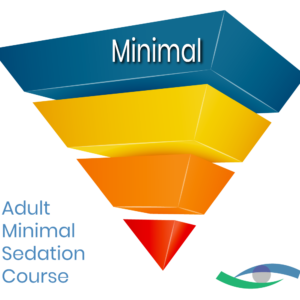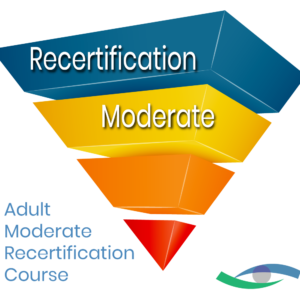The Growing Anesthesia Shortage & Non-Anesthesia PSA Training
The United States is facing an anesthesia shortage in 2025 that is reshaping how health care is delivered in hospitals and outpatient clinics. As demand for procedures continues to rise and the supply of anesthesia clinicians lags behind, health systems are confronting delays, increased costs, and rising stress among providers.
In response, more physicians, dentists, and nurses are seeking sedation training to expand their ability to safely manage patients when bringing in an anesthesia professional is more than the situation requires. The National Sedation Center is addressing this urgent situation by providing standardized, evidence-based procedural sedation training designed specifically for non-anesthesia providers.
The Current Anesthesia Shortage
Recent workforce analyses by the American Society of Anesthesiologists (ASA) and other industry experts confirm a widening gap between supply and demand. In early 2020, 35% of facilities reported difficulty filling anesthesia staffing needs. By late 2022, that number climbed to 78%.
This imbalance reflects three converging trends:
- An aging patient population is requiring more procedures.
- A rapid shift toward outpatient and minimally invasive interventions is increasing demand for procedural sedation.
- Burnout-driven retirements among anesthesia-trained clinicians are reducing the available workforce.
These trends have major consequences. Without adequate procedural sedation training among non-anesthesia providers, patient care is being delayed, procedural backlogs are increasing, and hospital systems are losing revenue. The shortage places additional stress on current providers and prompts more of them to leave, exacerbating the problem.
What Is Non-Anesthesia PSA Training?
Procedural sedation and analgesia (PSA) refers to the use of medications that help patients tolerate diagnostic or therapeutic procedures without the risks of general anesthesia. PSA encompasses minimal and moderate sedation, as well as the ability to recognize and respond if patients unintentionally drift toward deeper levels of sedation.
Traditionally, formal training in PSA has not been offered in most medical or nursing schools. Dentists, dermatologists, gastroenterologists, and nurses often encounter situations where sedation is necessary, yet they lack structured education in monitoring, medication safety, and airway management. This is where non-anesthesia PSA training comes in.
Benefits of Expanding PSA Training
Expanding procedural sedation training for outpatient procedures offers these benefits:
- Improved patient safety: Providers learn to recognize and respond to changes in sedation depth, including when a patient transitions unexpectedly into deep sedation.
- Reduced procedural delays: Clinics and outpatient centers can move forward without waiting for an anesthesia specialist to be available for lower-risk cases.
- Standardized care: Training aligned with ASA classification for sedation promotes consistency across settings.
- Greater workforce flexibility: Moderate sedation for nurses, dentists, and physicians enhances the capacity to manage routine procedures safely.
- Cost-effectiveness: Leaving anesthesia-trained professionals available for complex, high-risk cases lets them put their skills to use where they’re most needed.
How NSC Is Addressing the Crisis
The National Sedation Center is uniquely positioned to address the anesthesia shortage of 2025 by training non-anesthesia providers in PSA. Unlike traditional programs that vary by region or institution, NSC has developed the first standardized, evidence-based curriculum specifically designed for healthcare professionals who provide sedation outside the operating room.
Here’s what sets our program apart:
- We have a network of instructors across the US and Canada who offer in-person skill verification.
- We provide certification accountability through our National Registry and Primary Source Verification database.
- Our programs integrate essential airway skills, which are often missing from traditional training.
- Flexible pricing makes certification accessible without compromising quality.
- Students completing the Adult Moderate Sedation course may attend a free 20- to 30-minute Airway Skill Verification via Zoom.
Real-World Applications of PSA Training
Procedural sedation training is increasingly relevant for specialists performing routine interventions outside a hospital setting. Here are a few examples:
- Gastroenterology: Colonoscopies often require moderate sedation, yet relying on an anesthesia clinician is cost-prohibitive.
- Dentistry: Oral procedures that benefit from minimal sedation can be safely managed by a dentist or nurse who has received proper certification.
- Plastic and dermatologic practices: Cosmetic procedures performed in outpatient settings require safe sedation practices.
- Burn and wound care clinics: Painful dressing changes can be made more tolerable with trained staff providing moderate sedation.
In each case, non-anesthesia sedation certification ensures that patients receive safe, consistent care while reducing the burden on the already strained anesthesia workforce.
Challenges and Considerations
Expanding PSA training offers obvious benefits, but there are still several challenges to overcome:
- Compliance with guidelines: Providers must understand that sedation exists on a continuum. Patients can shift from minimal to moderate and from moderate to deep sedation, often without warning. Therefore, practitioners must be trained to manage unexpected airway compromise or cardiorespiratory depression.
- Workforce readiness: Nurses, dentists, and physicians who are new to sedation must build confidence in applying airway management skills. Without structured training, providers may hesitate in critical moments and possibly compromise patient safety.
- Patient variability: Factors such as age, weight, chronic conditions, and hidden use of alcohol or recreational drugs can drastically alter a patient’s response to sedation medications. Training must emphasize careful pre-procedure evaluation and continuous monitoring to account for these unpredictable variables.
- Institutional adoption: Clinics must adopt standardized certification to avoid patchwork practices where sedation is delivered inconsistently. Establishing uniform training and credentialing shields facilities from legal exposure and enhances the quality of care.
Explore Our Moderate Sedation Certification Programs
The anesthesia shortage of 2025 presents an urgent challenge that will take time to resolve. At NSC, we’re doing everything we can by providing standardized, evidence-based certification designed for non-anesthesia healthcare professionals. Our programs combine online learning with instructor-led airway skills training to meet national standards for safety and quality.
Through our efforts to expand non-anesthesia sedation training, we hope to bridge the gap between demand for sedation and the shrinking anesthesia workforce. Contact us today for more information or register online to take the next step in sedation certification.






